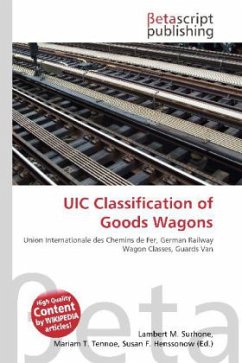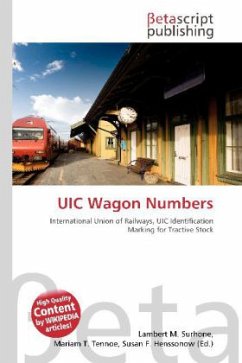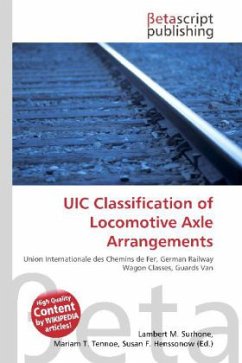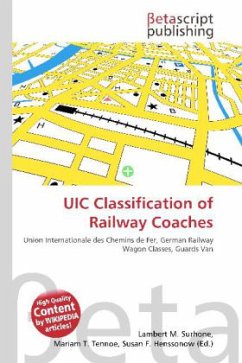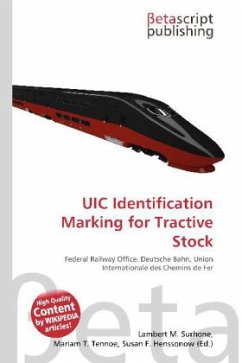
UIC Identification Marking for Tractive Stock
Versandkostenfrei!
Versandfertig in 6-10 Tagen
23,99 €
inkl. MwSt.

PAYBACK Punkte
12 °P sammeln!
Please note that the content of this book primarily consists of articles available from Wikipedia or other free sources online. Since the beginning of 2007 all newly authorised railway locomotives or other traction units, at least in Europe, have been given a twelve-digit number. This makes the locomotive or railcar clearly identifiable from an EU-wide list of registered railway vehicles and which follows the UIC Code of Practice 438-3, Identification marking for tractive stock. A complete index number comprises 12 digits. The first two digits form the type code, the third and fourth, as with ...
Please note that the content of this book primarily consists of articles available from Wikipedia or other free sources online. Since the beginning of 2007 all newly authorised railway locomotives or other traction units, at least in Europe, have been given a twelve-digit number. This makes the locomotive or railcar clearly identifiable from an EU-wide list of registered railway vehicles and which follows the UIC Code of Practice 438-3, Identification marking for tractive stock. A complete index number comprises 12 digits. The first two digits form the type code, the third and fourth, as with wagon numbers, the country of origin. Digits 5 to 11 may be freely defined by the country concerned, and the final digit is a check figure. It is followed by abbreviations for the country of origin and the owner of the vehicle. By the deadline of 1 August 2008 all traction units in a fleet had to be registered and marked up with their index number. Existing locomotive numbers used internallywere not affected.




